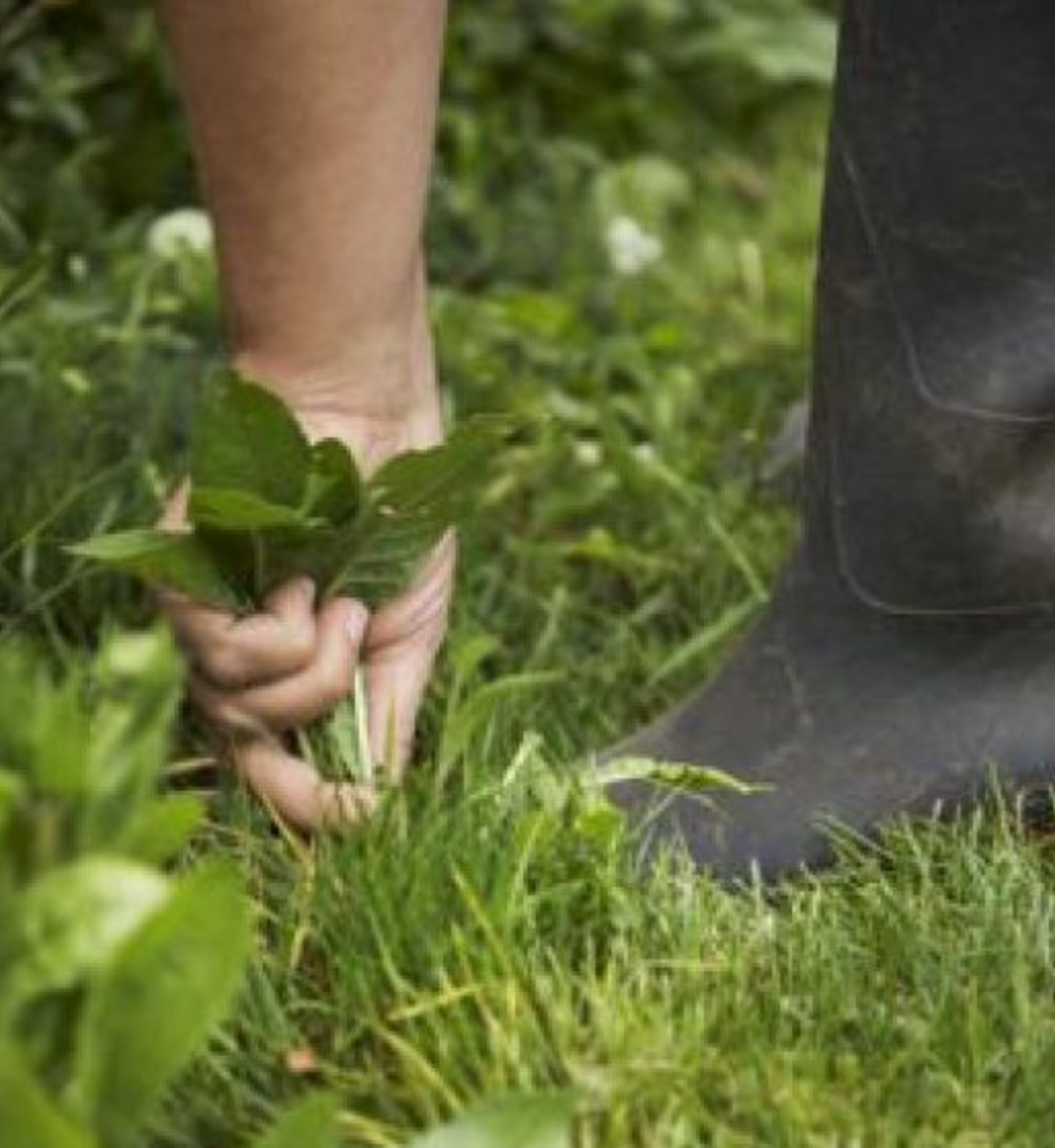Extract from Wikipedia. ........


Pulling a weed the hard way.
Pulling Weeds by Hand
The best way, though the hardest, is to pull the weeds by hand. Keep in mind that for this method to be effective, you should remove the whole plant with its roots. For weeds with shallow roots, you can just hold the plant by its stem and pull gently. For those with deeper roots, such as dandelions, you need to take some extra care when removing them. You can use a small hoe to dig in the soil around the stem to loosen the soil, then get a firm grasp of the stem and pull. You may need to dig deeper and try pulling several times until you get the entire root out successfully.
Pulling Weeds With a Gardening Tool
Pulling weeds by hand is time-consuming, back-breaking work. An alternative is to use gardening tools to help. For shallow-rooted weeds, you can use a regular garden hoe, but for deep-rooted ones, I recommend you use a special tool called a winged weeder.
To remove weeds with the winged weeder, place the bottom tip of the blade right next to the stem and press down vertically to push the blade into the soil and then tilt the weeder downwards towards the ground to pull the whole root out. Repeat this operation as necessary. Note that using this tool is more time-consuming than using a regular hoe as you need to individually remove each unwanted plant, but it works better for deeper roots.
You can purchase these tools from any hardware store.
Using a Chemical Weeding Product
If there are too many weeds to remove manually or with a hoe, you can use a weed killer made of chemicals and spray the chemical directly on each weed. It's not environment-friendly, so use only if it is absolutely necessary. Some, like Ortho's Weed-B-Gon, kill many weeds including dandelions, crabgrass, and clover. This product does not damage the lawn. Or you can purchase the concentrate, mix it with water, then spray where needed.
After spraying, you can see results in a day or so. After they die, you'll have remove them by hand, which is difficult, but much easier than pulling a live weed.
A downside of these chemicals is that they may not kill the weeds entirely. The chemical only kills what it touches, and if it was not sprayed sufficiently, the weed may not die, so make sure to cover all unwanted plants sufficiently.
Weed Prevention
To make your weed removal efforts long-lasting, you can take some proactive measures to delay unwanted plants from growing back again by using chemical products or by laying down landscape fabric. Both of these methods are described in detail below.
Using a Weed Preventer
You can use weed preventer granules, such as Preen, to prevent weeds from growing for a temporary period of about three months. Some bottles come with a handy dispenser that enables you to spread the granules around plants, bushes, and trees.
Some weed preventers also come with a fertilizer for plants, so you get both benefits.
Using a Chemical Lawn Fertilizer with Weed Control
A fertilized lawn has fewer weeds since a healthy lawn is dense and leaves little space for unwanted plants to grow. Therefore, both fertilizing your lawn and spreading a weed preventer help control weeds. There are some products available that combine lawn fertilizers with weed control, such as Scott's Turf Builder with Weed Control.
By the way, it is recommended that you fertilize your lawn twice a year, once in the spring and once in the fall.
Natural Weed Prevention—Using Landscape Fabric
A chemical can help prevent weeds from growing for only a few months, after which they will reappear if you don't reapply the chemical. For longer-lasting results, you can use landscape fabric, which prevents them from growing for several years. Landscape fabric blocks the sun from the covered area, preventing unwanted plants from growing, although it still allows air, water, and nutrients to penetrate the soil. You can cut holes in this fabric to allow certain plants to live happily.
Use landscape fabric on any area that you don’t want weeds to grow on, large or small, such as a flower bed or a narrow alley that is difficult to mow. Rolls of this material can be purchased from hardware stores like Home Depot or Lowe's or in the garden section of a grocery store.
When laying down the landscape fabric, there are several steps you need to follow. The following video shows how to lay down landscape fabric around plants and it is followed by steps that describe how to completely cover an alley.
No comments:
Post a Comment